Burst Pipe in home
This home had a pipe burst in the ceiling. The water was shut off when we arrived, but the ceiling needed to be removed and the area needed to be dried out. Containment was put up to protect the windows and keep the rest of the house clear of debris. Concentrating the dry area will also hasten the drying process so the job can be completed quicker.
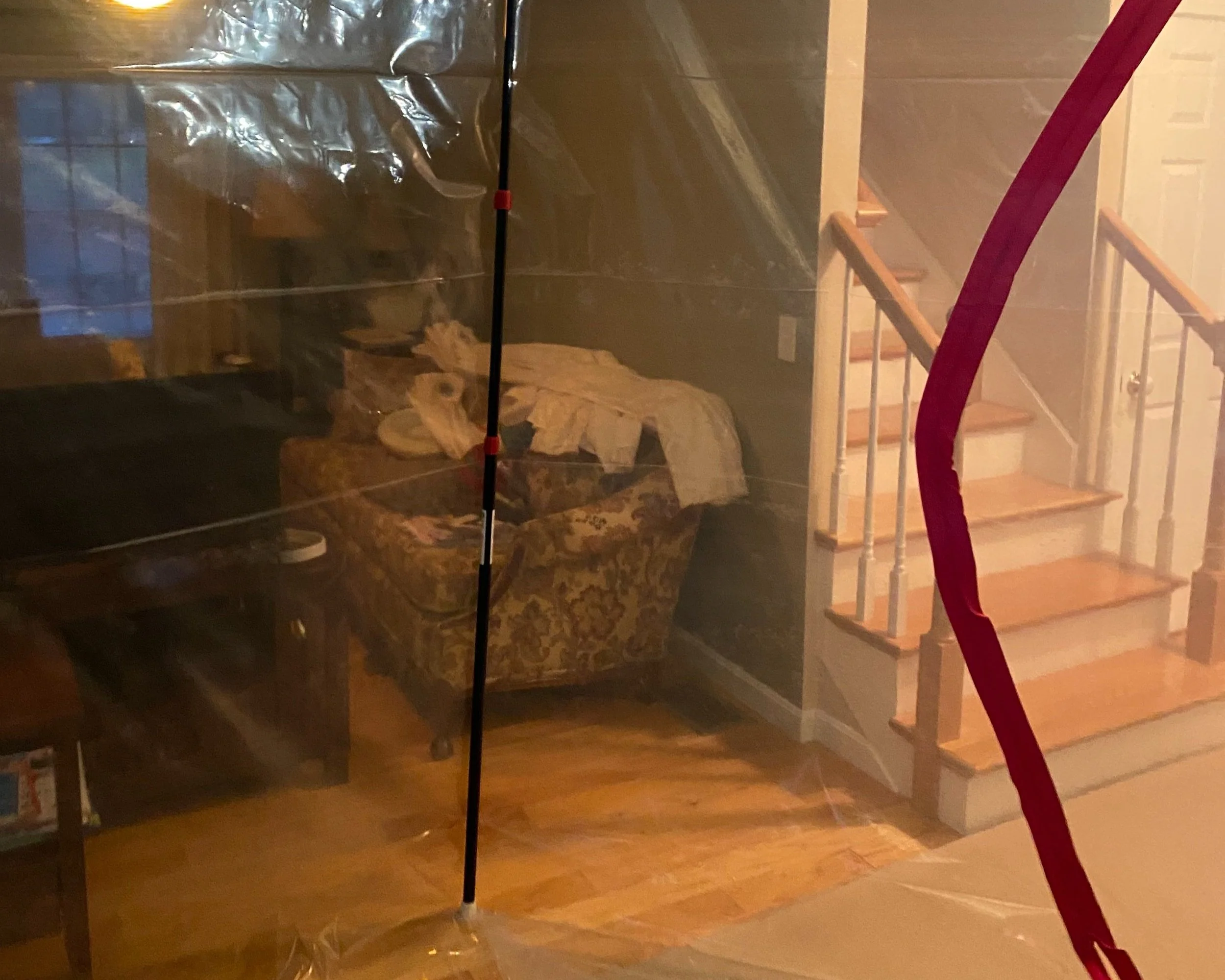
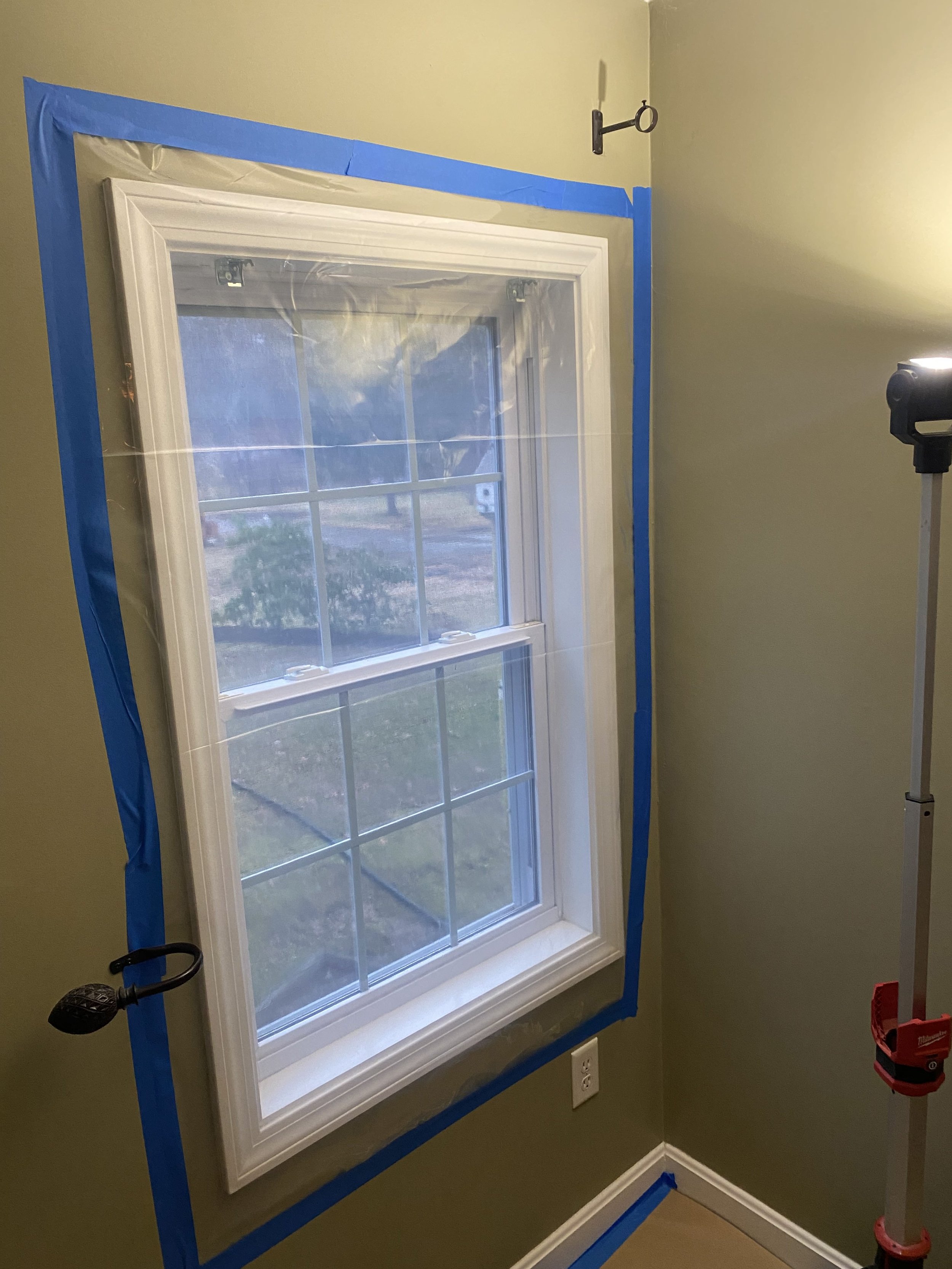
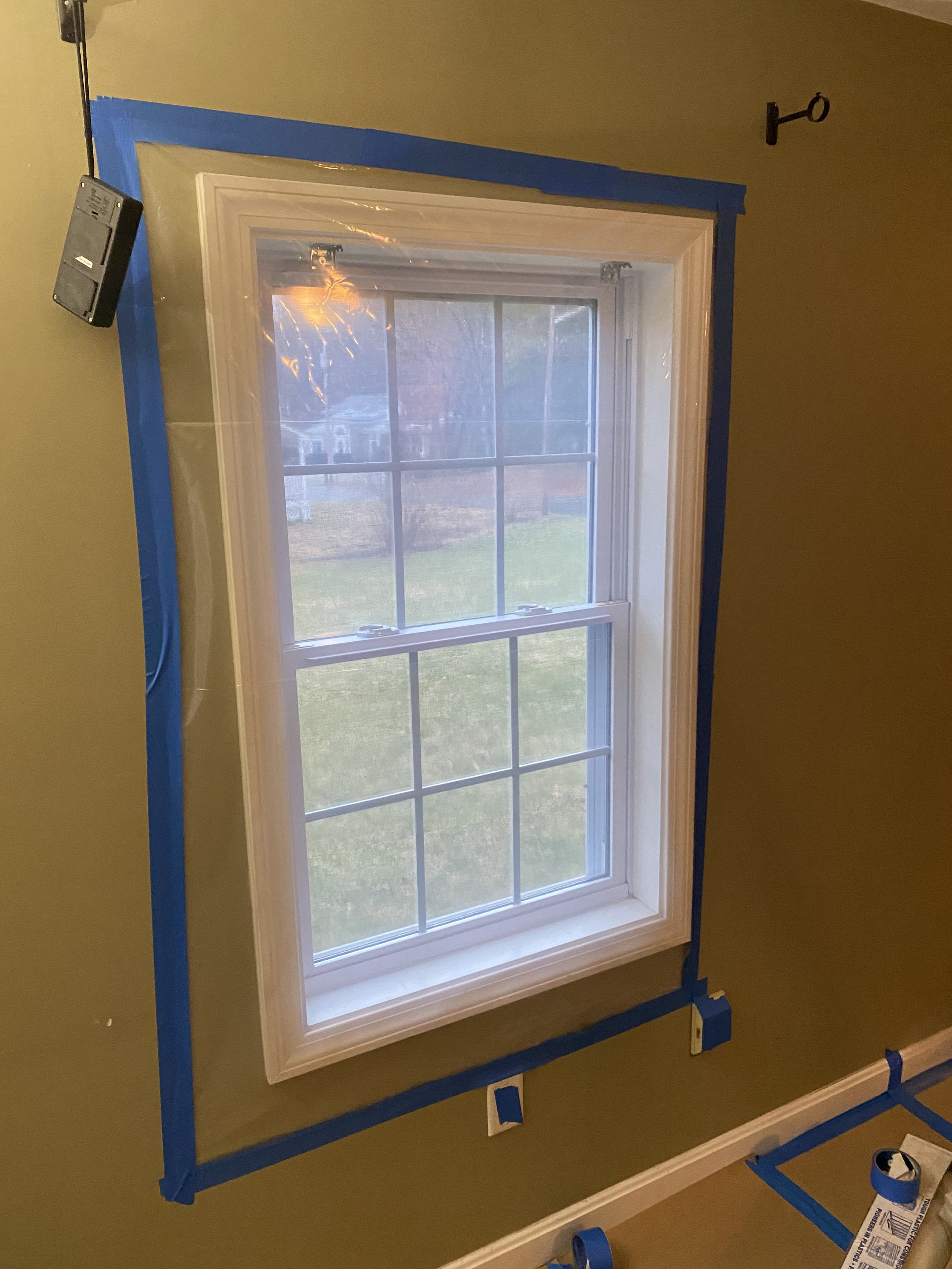
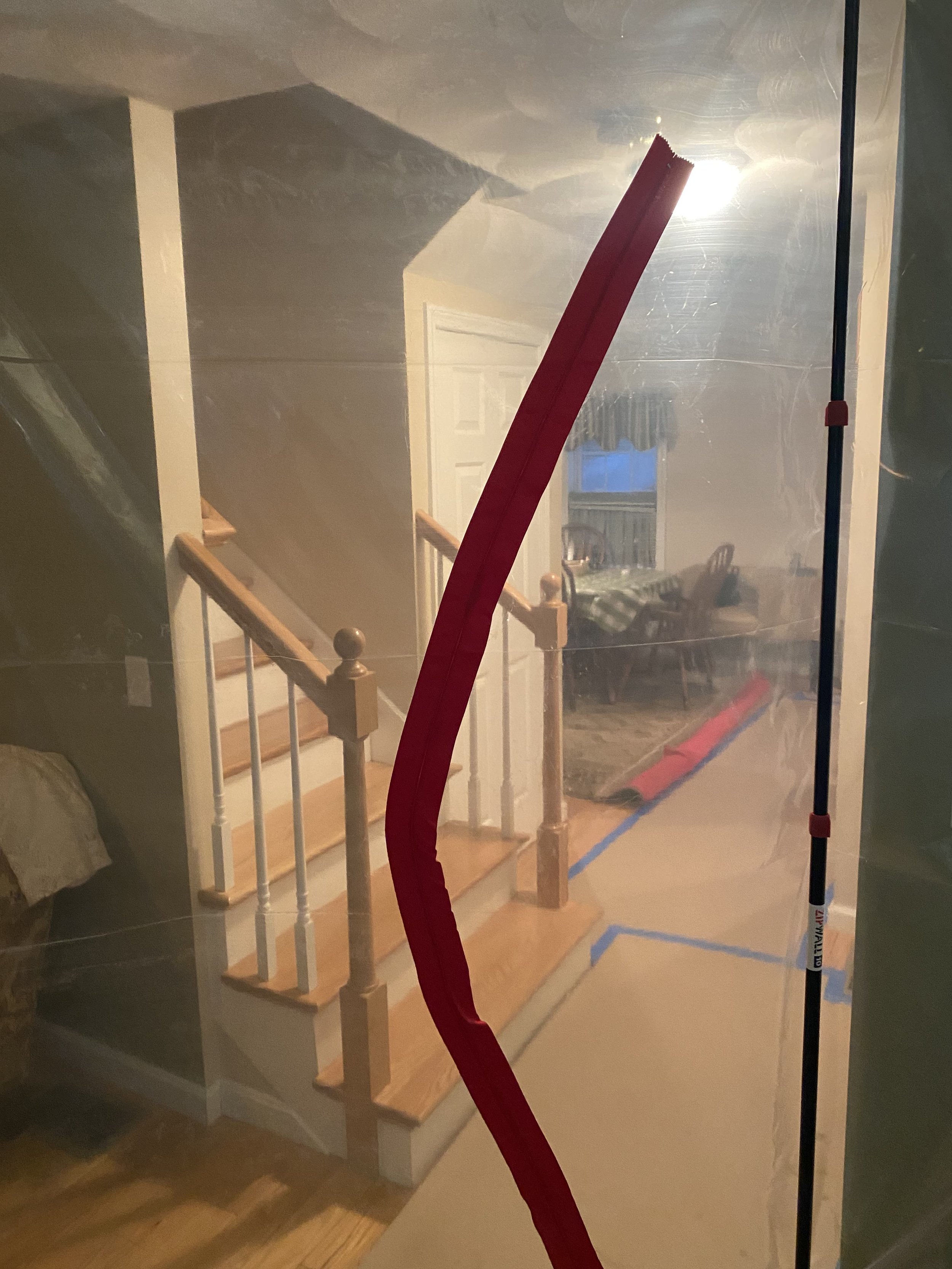
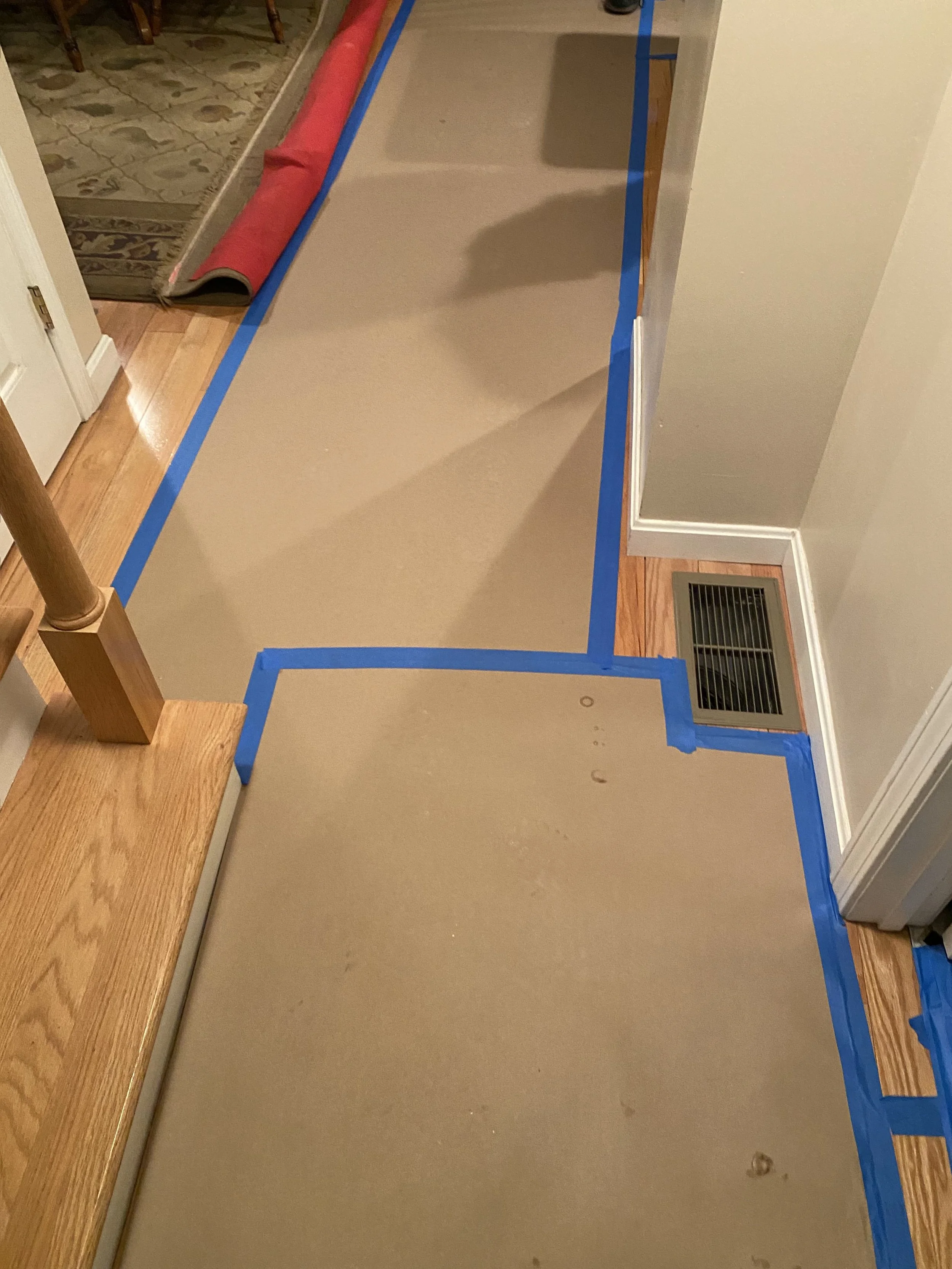
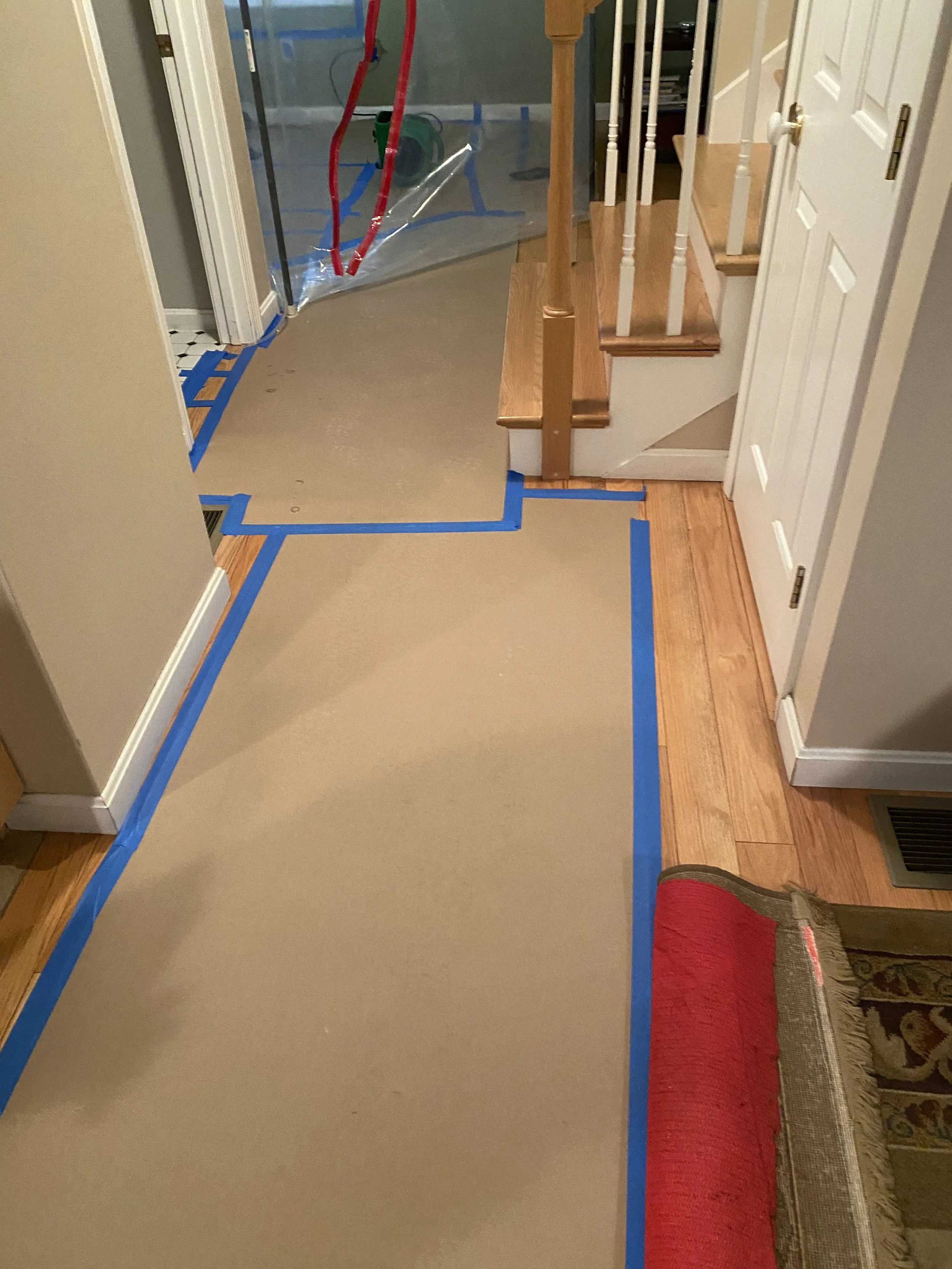
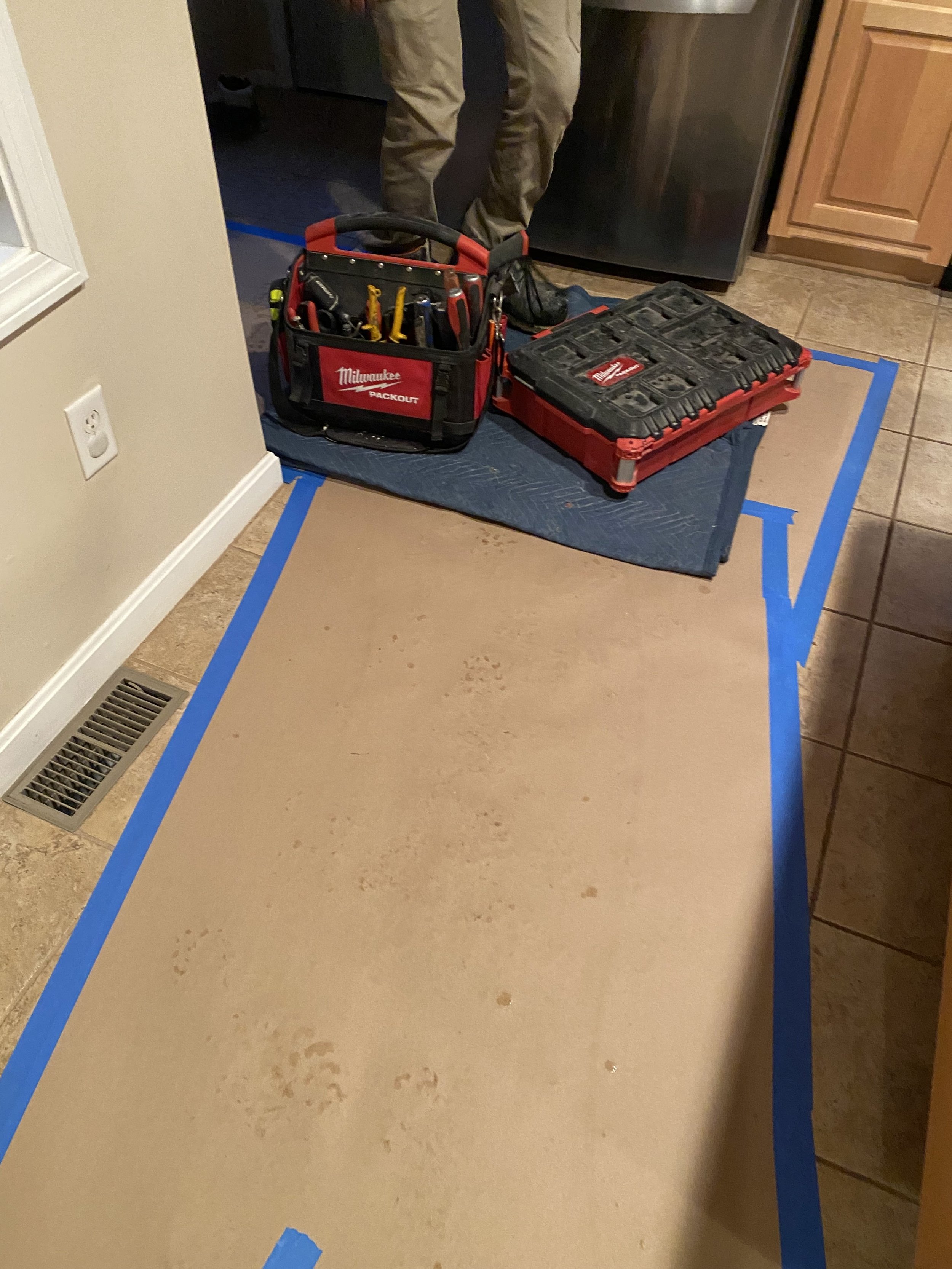
Floor Protection
The floor on the way from the main entrance to the house and the area of work is protected with ram board. This will prevent any damage to the floor from wet or dirty boots, tools being dropped, or trash being hauled.
Containment
Containment is set up to focus dry areas. This can bring dry times down by quite a bit if the water is in a large open area. This will not always be necessary for water restoration, but it can make a big difference in rooms that have water only in a small part of the room.
Wet ceiling removal
The affected ceiling is removed to get more wet, unsalvageable materials out of the drying area. Any mold buildup above the ceiling will be removed too.
Equipment setup
During and after extraction equipment will be setup, dehumidifiers, air movers, and air scrubbers (situationally).
Moisture readings
Any and all walls are tested for moisture. These meters will detect if there is moisture on the other side of the drywall, so if the front appears dry, but there is water behind we will know to remove the wall. Removing these wall will prevent more damage either from water or, further down the line, mold.




